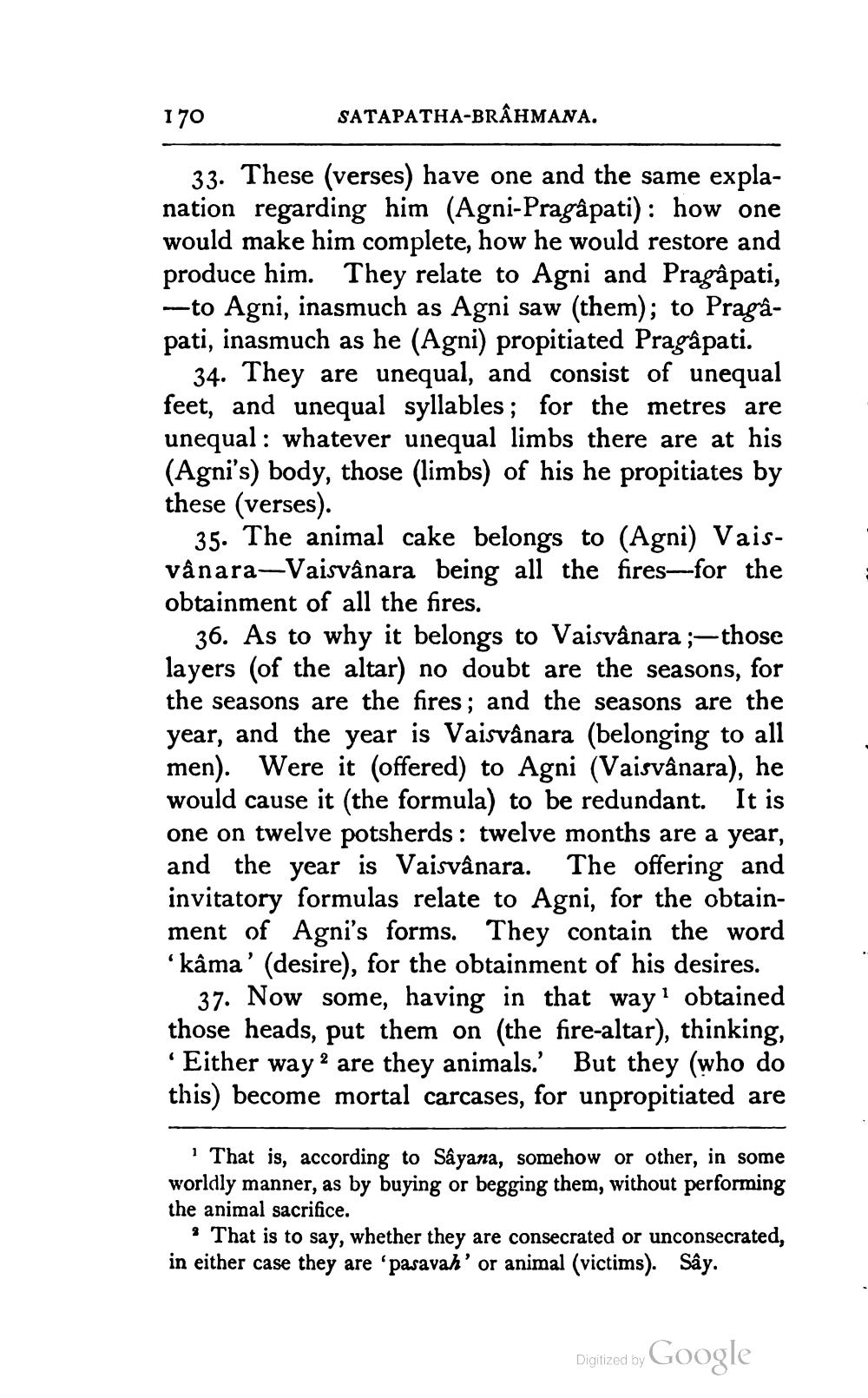________________
170
SATAPATHA-BRAHMANA.
33. These (verses) have one and the same explanation regarding him (Agni-Pragâpati): how one would make him complete, how he would restore and produce him. They relate to Agni and Pragâ pati, --to Agni, inasmuch as Agni saw (them); to Pragapati, inasmuch as he (Agni) propitiated Pragâpati.
34. They are unequal, and consist of unequal feet, and unequal syllables; for the metres are unequal: whatever unequal limbs there are at his (Agni's) body, those (limbs) of his he propitiates by these (verses).
35. The animal cake belongs to (Agni) Vaisvânara-Vaisvânara being all the fires—for the obtainment of all the fires.
36. As to why it belongs to Vaisvânara ;—those layers (of the altar) no doubt are the seasons, for the seasons are the fires; and the seasons are the year, and the year is Vaisvânara (belonging to all men). Were it (offered) to Agni (Vaisvânara), he would cause it (the formula) to be redundant. It is one on twelve potsherds : twelve months are a year, and the year is Vaisvânara. The offering and invitatory formulas relate to Agni, for the obtainment of Agni's forms. They contain the word 'kâma' (desire), for the obtainment of his desires.
37. Now some, having in that way' obtained those heads, put them on (the fire-altar), thinking, • Either way 2 are they animals.' But they (who do this) become mortal carcases, for unpropitiated are
That is, according to Sâyana, somehow or other, in some worldly manner, as by buying or begging them, without performing the animal sacrifice.
* That is to say, whether they are consecrated or unconsecrated, in either case they are 'pasavah' or animal (victims). Sây.
Digitized by Google




